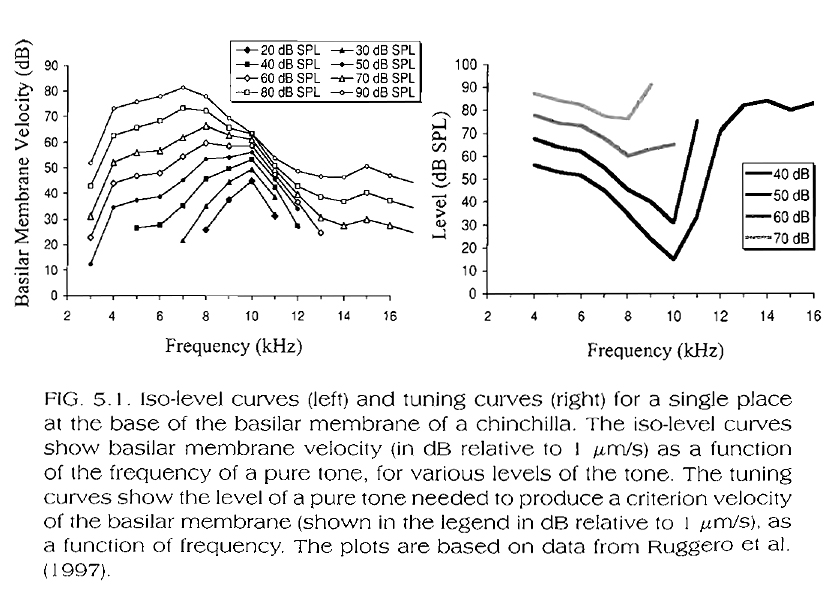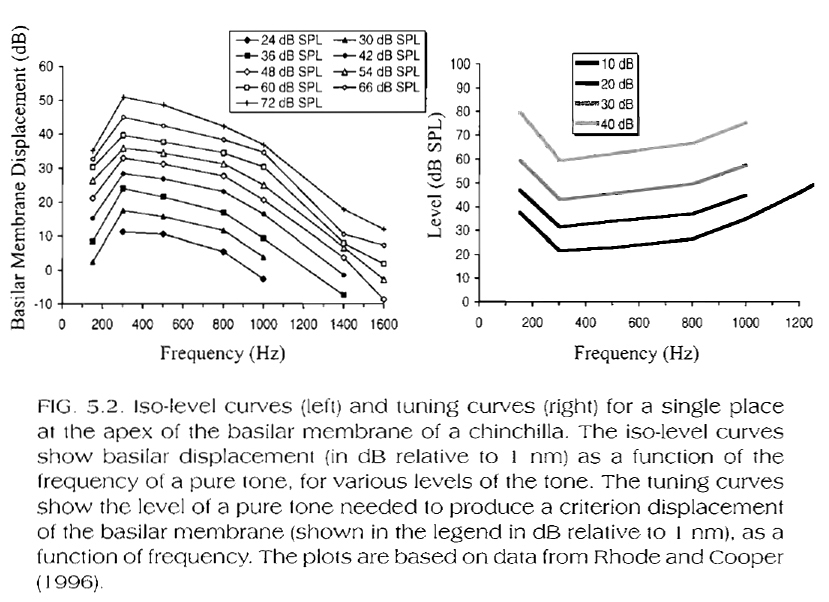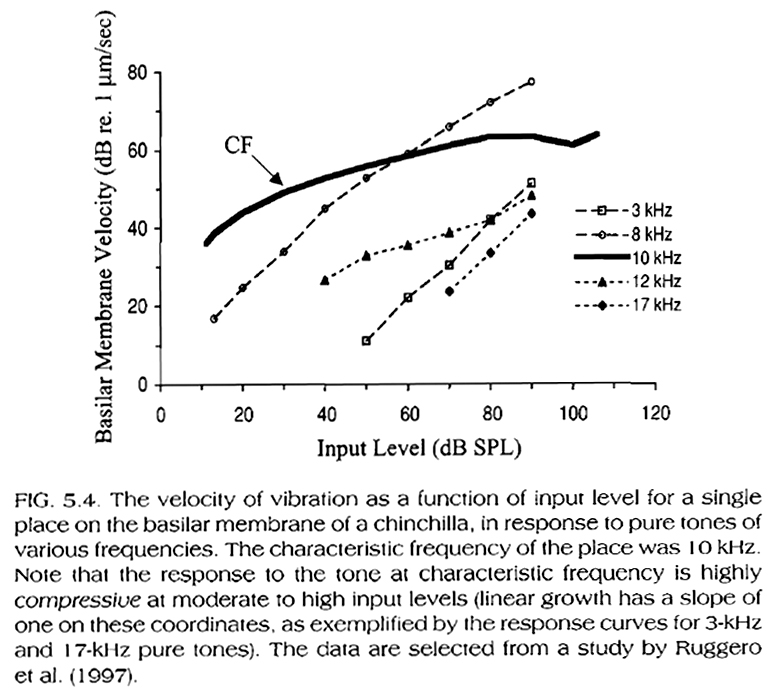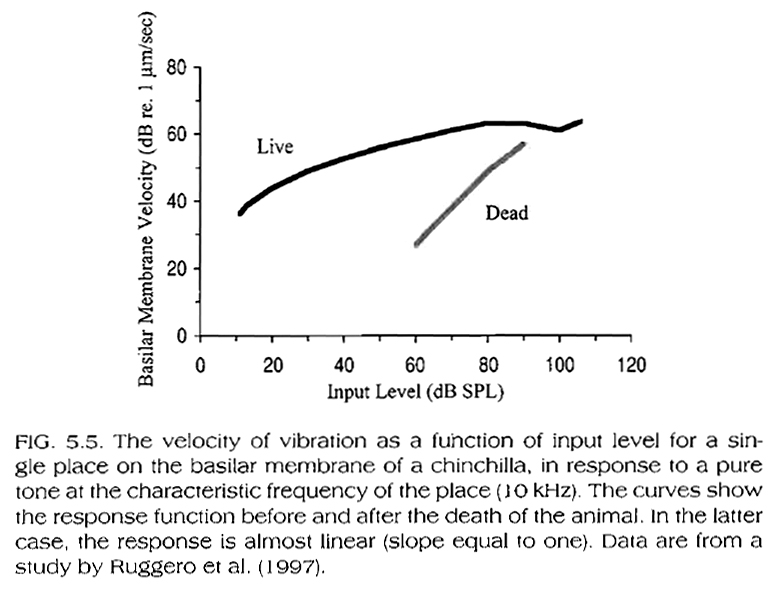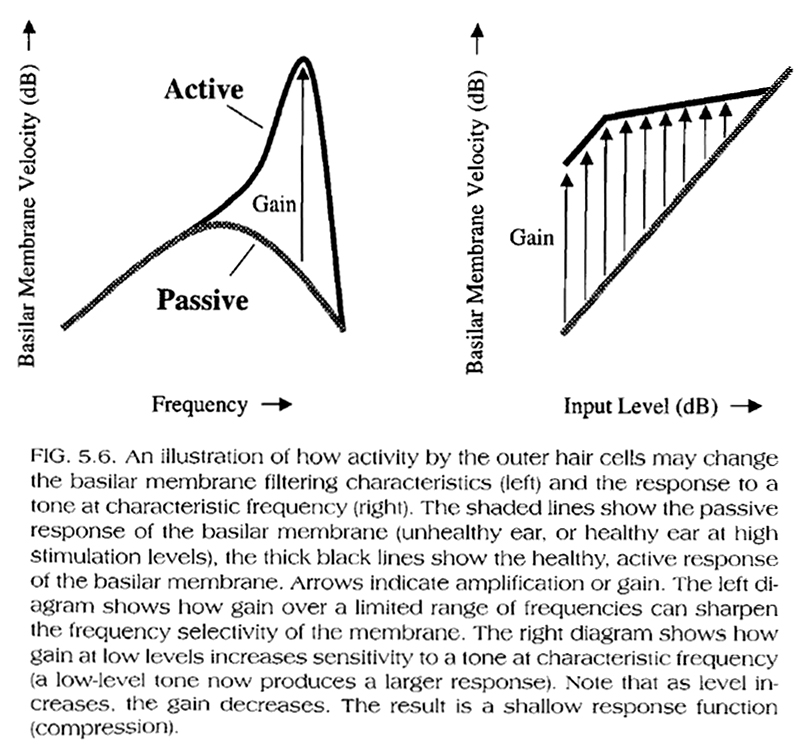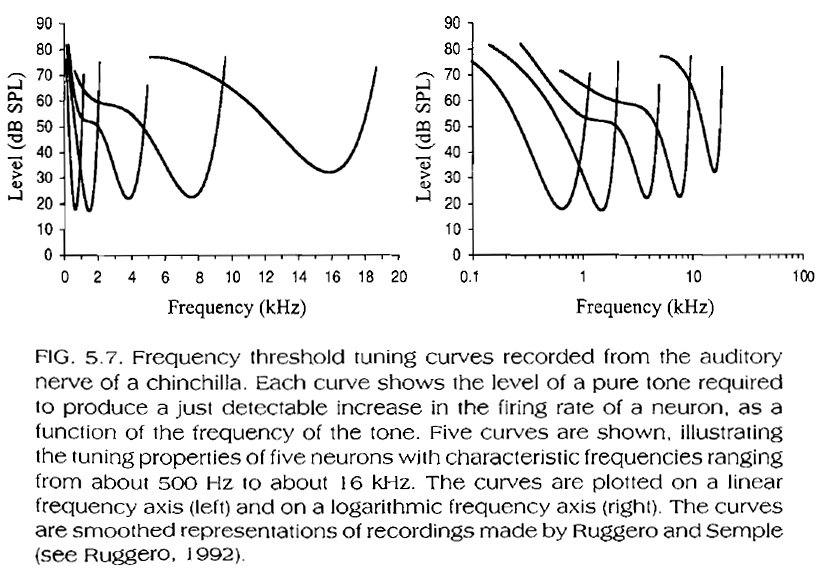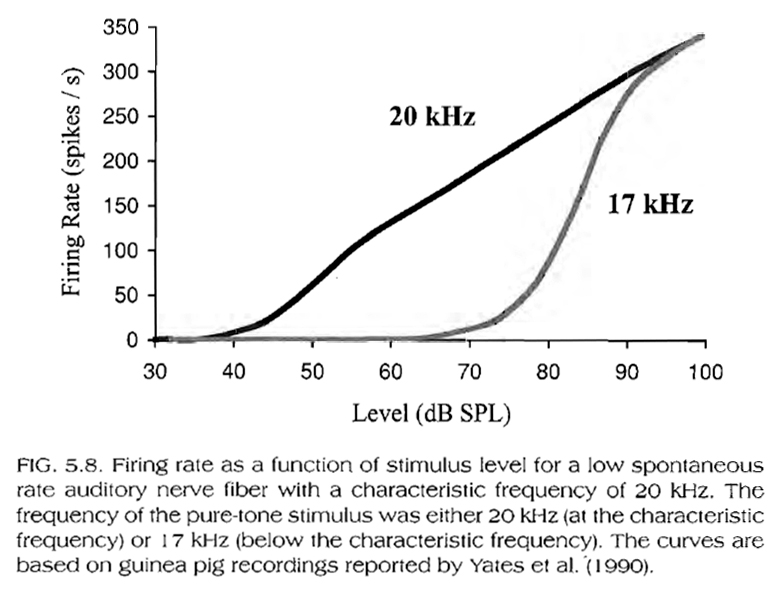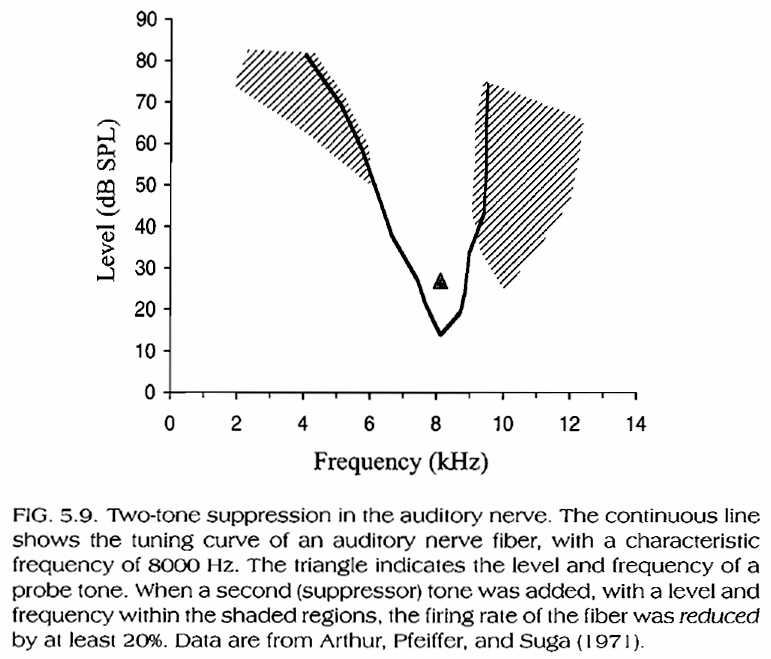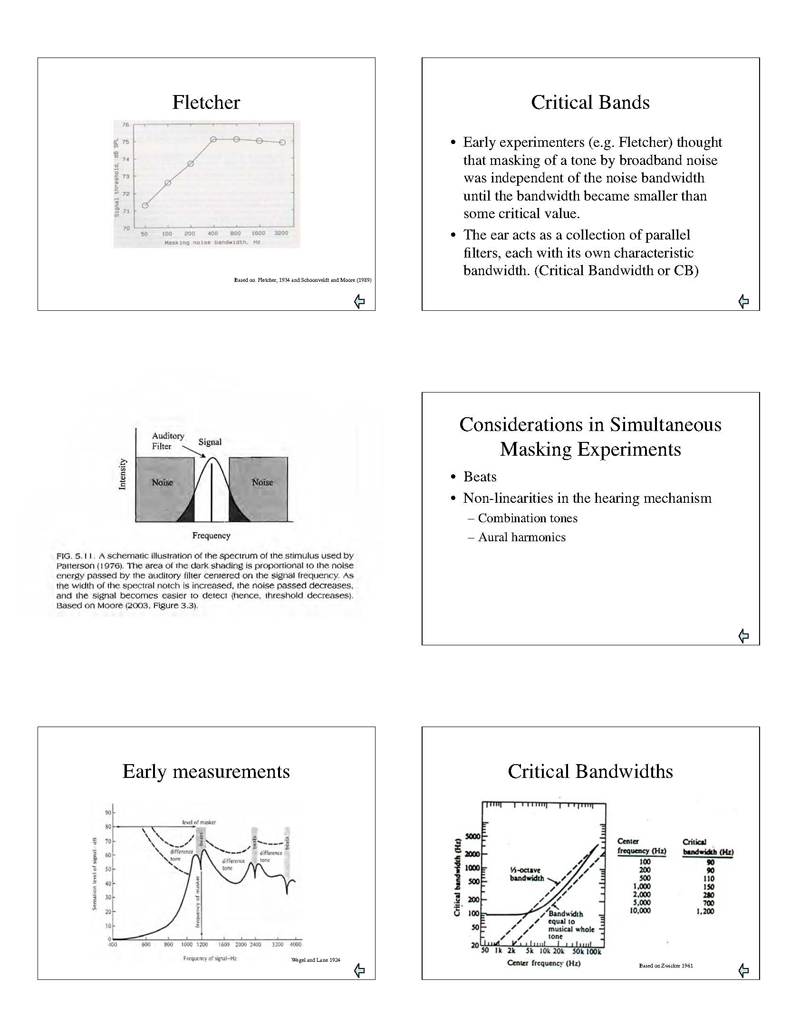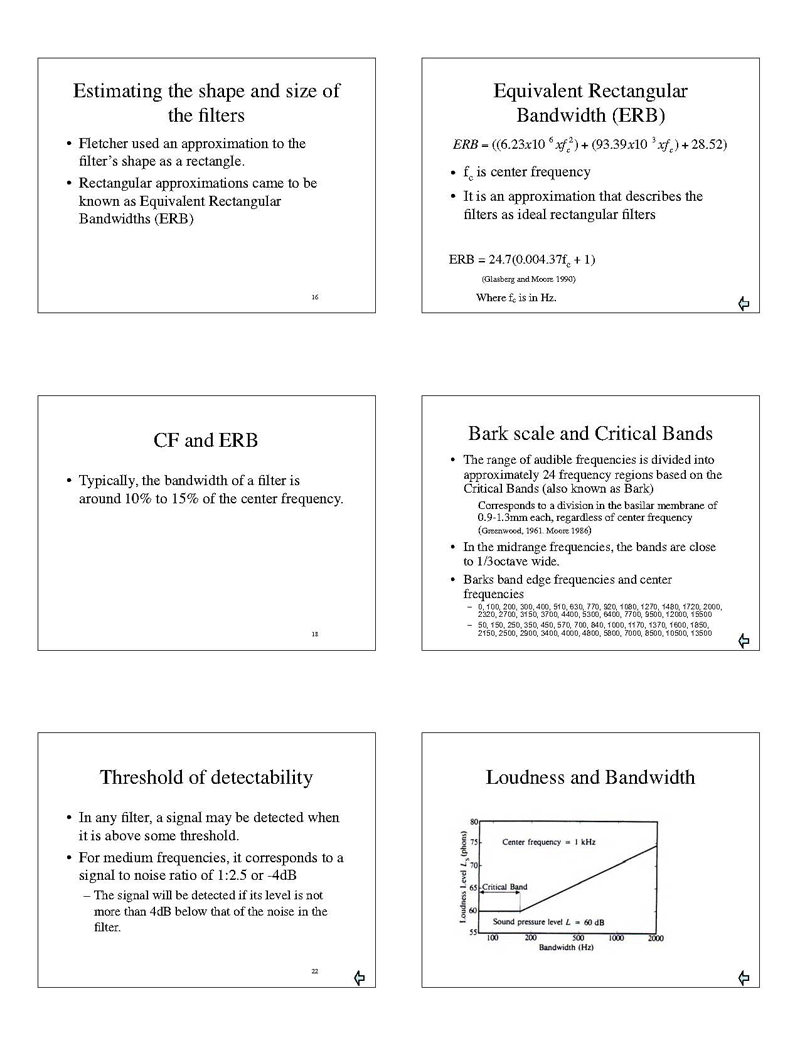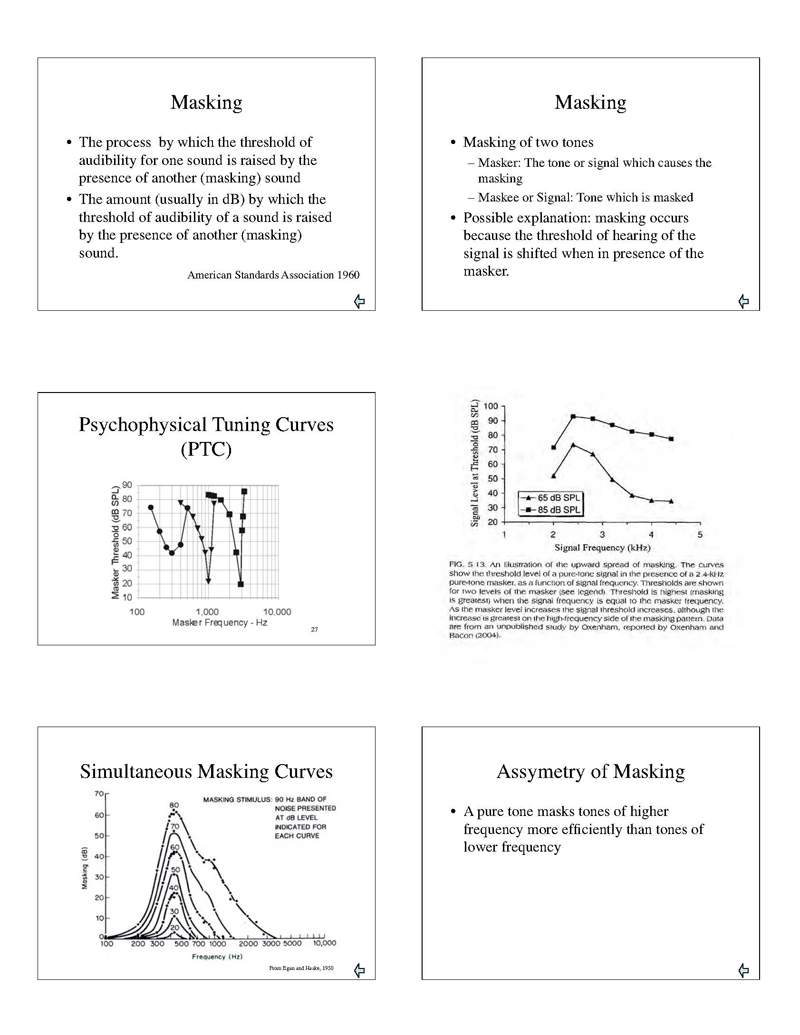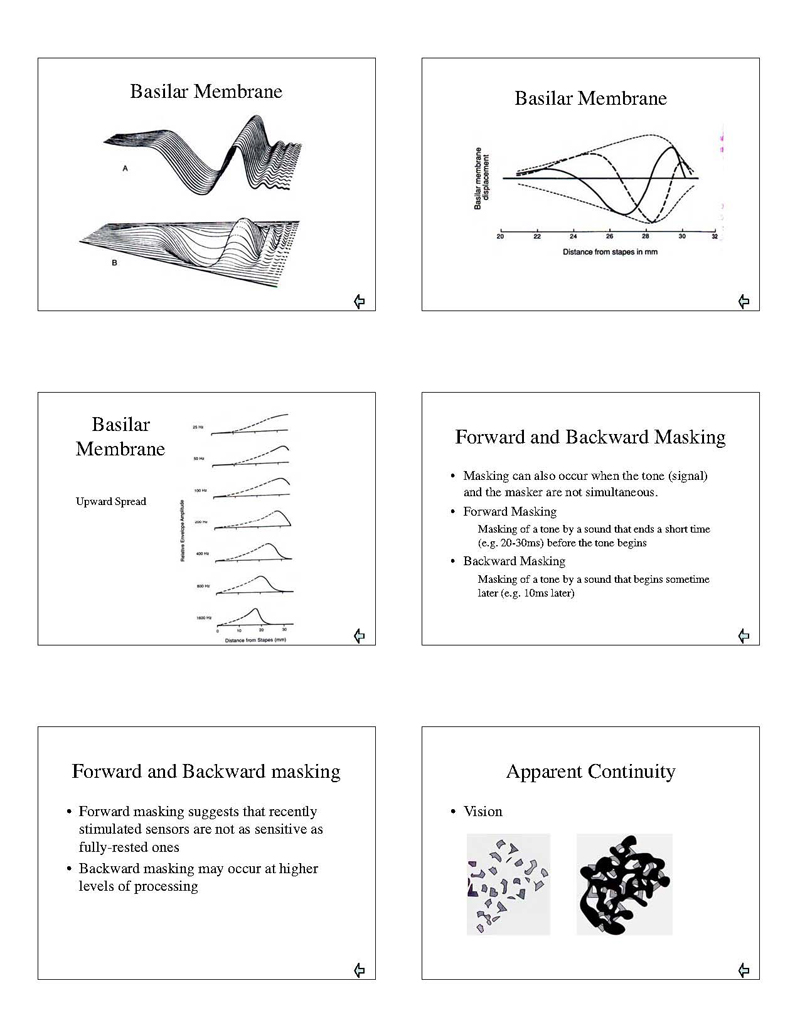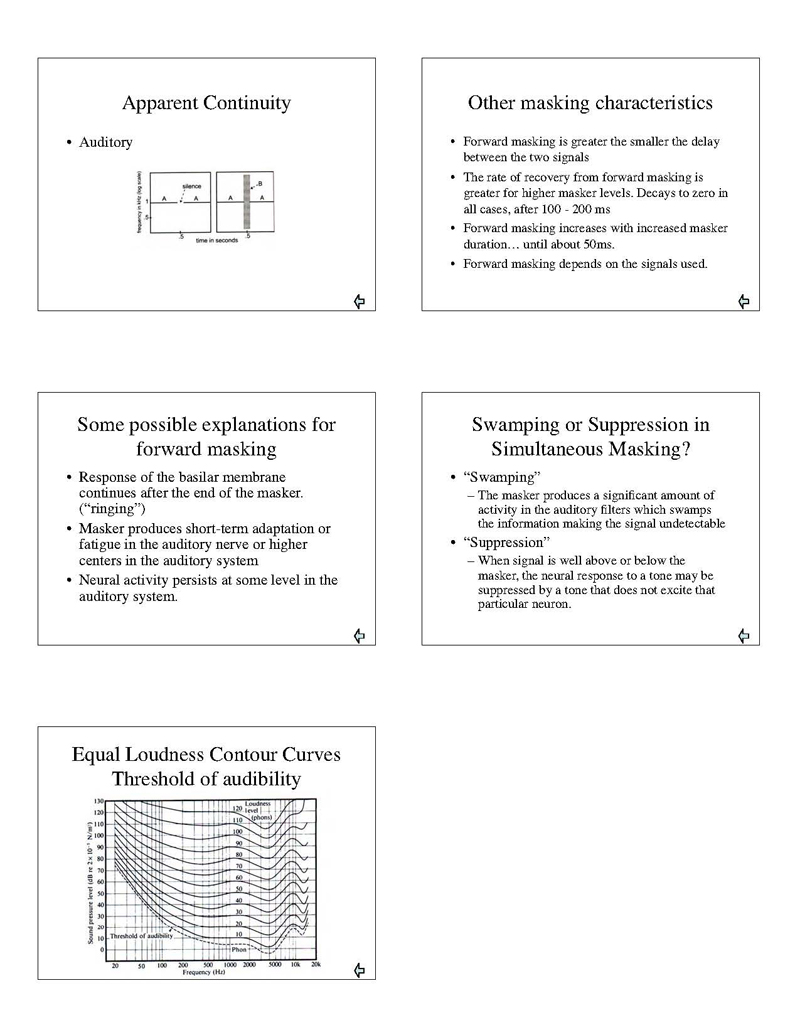Basilar Membrane
The filter shape of the basilar membrane (BM) response to pure tone stimuli changes with stimulus level.
More specifically, for high-frequency response positions on the BM (i.e. basal portions of the BM ~10KHz, see Fig. 5.1, below, for chinchilla data), as the stimulus intensity increases, the filter's bandwidth increases and the best frequency for a given BM location decreases. So, as the level of sinusoidal stimuli exciting the basal portions of the BM increases, the perceptual results are:
A larger area on the BM is stimulated, corresponding to a stimulation of a larger number of inner hair cells and, consequently to a distorted perception (one that includes not only the original sinusoid but additional ones, which correspond to the characteristic frequencies of all inner hair cells stimulated).
The decrease in the 'best' frequency of a given place on the BM means that this place will respond best to a frequency lower than the characteristic frequency of the inner hair cells aligned with it. So, a strong sinusoid of a given frequency will end up exciting best an inner hair cell of a higher characteristic frequency, sending a higher frequency, and therefore pitch message to the brain than the pitch that would usually correspond to the sinusoid's actual frequency.
For lower-frequency response positions on the BM (i.e. apical portions of the BM ~500Hz, see Fig. 5.2, below, for chinchilla data), the filter's bandwidth and 'best' frequency do not change significantly with stimulus level increases.
It is practically very difficult (if not impossible) to obtain in-vivo (i.e. live) physiological measurements from even more apical locations (i.e. locations responding to frequencies lower than 500Hz) on the BM. Perceptual experiments, however, indicate that, as the stimulus level increases, the perceived pitch of a low frequency tone decreases significantly. This suggest that, in terms of 'best' frequency response, apical portions of the BM may respond in an opposite manner to basal portions (where, as the stimulus level increases, the perceived pitch of a high frequency tone also increases).
From the data in the above figures and in Fig. 5.4, below (presenting portions of the data in Fig. 5.1), we can draw an important conclusion:
The mechanical response of the BM is compressive at (and near) the best frequency of a given BM location (defined as the frequency at which a given BM portion responds best for low-to-moderate stimulation intensity levels), while it is linear at frequencies below or above this frequency. More specifically, the mechanical response of the BM at (and near) the best frequency of a given BM location is more sensitive to low stimuli levels at this frequency than at other frequencies. The response increases linearly for up to low-to-moderate stimuli levels, and compressively for higher stimulus levels.
Based on Fig. 5.5, below (BM response of a live vs. a dead cochlea), we can also conclude that this compressive, nonlinear response of the BM is not due to its mechanical properties alone but to mechanical influences on the BM within a live cochlea. As we have seen in Module 3a (see also Fig. 5.6, below), the compressive BM response in a live ear is due to the action of the outer hair cells, which, for a given 'best' frequency on the BM, amplify low-level stimuli (~10-40dB) more that they do high level stimuli (~40-80dB), while they actually help de-amplify or attenuate stimuli at very high levels (~80-110dB). At even higher levels, the outer hair-cell function is compromised.
